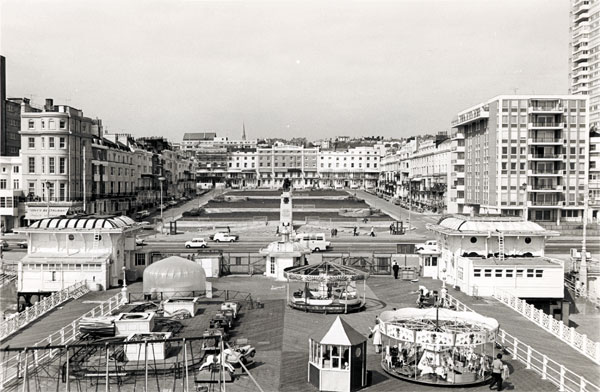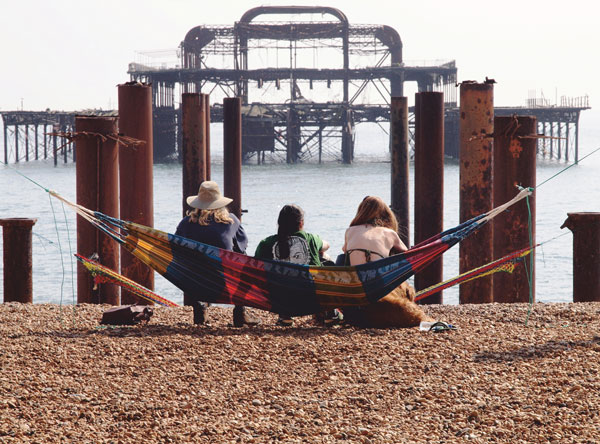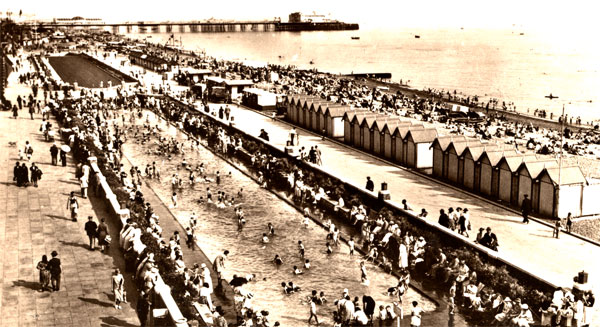Project Brighton: QueenSpark latest publication Brighton’s Seaside Stories gathers the tales of the city’s history, from the people who make it

With the launch of its latest book Brighton’s Seaside Stories, Brighton and Hove’s QueenSpark Books cements its status as the country’s longest-serving community publisher. Originally formed in 1972 as part of a campaign to open a school at the Spa buildings in Queens Park – unbelievably, there was an advanced proposal for the buildings to become a casino instead – the organisation has now published over 100 books.
And what a variety of books they are! QueenSpark has always promoted the ‘lesser-heard’ voices of our city – in the early years there were riveting first-hand accounts of working-class lives from the 1910s through the World Wars; more recently, they have published books with recently-arrived migrants and homeless people, a pioneering collection of transgender residents’ stories, and a couple of graphic novels detailing the ‘untold histories’ of the city’s last 300 years, and the impact that World War I had on local people.
As a not-for-profit community-focused company and charity, funding has always been tight. This has meant that most print runs are short; as a result, many of the early books are out of print, which could mean that all of the important social context and history is almost lost to the general public. To ensure it isn’t, earlier this year QueenSpark called for volunteers to read through the early books, and select themes and stories that might be compiled into new publications. The first result of this process is Brighton’s Seaside Stories – subtitled A People’s History – within which you’ll find accounts from those who worked on the old West Pier, the fishing community and a famous stuntman, as well as stories of entertainment, gambling, sex and celebration (though not necessarily at the same time…). The text is accompanied by photos from the 1880s to the present day (many taken from QueenSpark’s own photo website), the latter very appropriate as one of the contributors – Len Goldman – features in the 1920s section, as well as rounding off the book with an account of his 100th birthday, spent aboard the i360.

QueenSpark has always promoted the ‘lesser-heard’ voices of our city
Why is QueenSpark important, and what does it mean for our city? QueenSpark’s John Riches explains that, “the reason that QueenSpark still exists (unlike any of the organisations that we used to be part of a movement with, back in the 70s and 80s) is that Brighton is a constantly evolving, creative place – a constant influx of ‘newcomers’ means that there are always new stories to find and tell; and in addition, when people want to find out about a place that they’ve moved to, what better way to find out than from first-hand accounts of the people that went before? Also, we have always been grassroots and intensely localised; when we run a stall at a community event, we always get people coming up and saying ‘I used to work for you’, ‘I was one of your volunteers on that book’ sort of thing. People like and trust us to help them tell their stories, and our readers also trust us to present them with stuff they didn’t know, or had forgotten – we hope that they continue to do so!”
Further compilation titles are planned – QueenSpark reckon they have enough material for books on ‘shops’, ‘work’, ‘music and culture’, and probably more yet to be discovered.
If you would like to get involved in the future, contact admin@queensparkbooks.org.uk
www.queensparkbooks.org.uk | www.photosbrightonandhove.org.uk





















